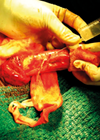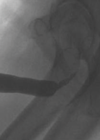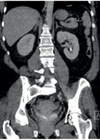Features archive for 2018
Dietary citrate substitution in urolithiasis patients
Stone formation is dependent on supersaturation of urinary salts and urinary crystal retention. Urinary promoters (protein aggregates, cell debris) and inhibitors (citrate, magnesium, urinary macromolecules such as glycosaminoglycans and proteins) are involved in the process of stone formation [1]. Hypocitraturia...
The medical management of LUTS/BPH – an update
For many years it has been recognised by both medical professionals and the general public that the development of lower urinary tract symptoms (LUTS) is highly prevalent and is predominantly age-dependent. Medical professionals understand that in men this is often,...
Neuromodulation for lower urinary tract dysfunction – an ICS update
Non-invasive and invasive electro-stimulation techniques have been extensively studied in the treatment of lower urinary tract and bowel dysfunction, including overactive bladder syndrome (OAB), non-obstructive chronic urinary retention, faecal incontinence and chronic pelvic pain. Currently, the most common indication for...
The management of renal calculi – Pt 2
Renal calculi can be managed according to four treatment options: conservative management, extracorporeal shock wave lithotripsy (ESWL), flexible ureterorenoscopy (FURS) and percutaneous nephrolithotomy (PCNL). Having addressed conservative management and ESWL in the last edition of Urology News, the second article...
Training to be a urologist: how risky is it?
The NHS and urology face challenging times in trying to provide quality patient care efficiently and economically. Urology trainees are experiencing conflicting pressures with a new contract, a challenging on-call system and changing training requirements in an overstretched, centralised service...
Catheters and incontinence after radical prostatectomy: Preparing (but not scaring) men
Every year about 6000 men in the UK undergo radical prostatectomy (RP) for treatment of prostate cancer [1]. Despite surgical advances, RP continues to be associated with significant side-effects including urinary incontinence (UI) [2]. Immediately following removal of the urinary...
Male infertility
Definitions Infertility is the inability of a sexually active, non-contracepting couple to achieve spontaneous pregnancy in one year [1]. About 15% of couples do not achieve pregnancy within one year and seek medical treatment for infertility. Semen parameters are standardised...
Penile fracture
Traumatic rupture of the tunica albuginea with either one or both corpora cavernosa of the penis is known as penile fracture. This may be associated with corpus spongiosum or urethral injury. Incidence Penile fracture was reported for the first time...
Understanding Stauffer’s syndrome
Who was Stauffer and what is Stauffer’s syndrome? Maurice Stauffer (1915-1994) was a gastroenterologist at the Mayo Clinic in Rochester, United States, and in 1961 first characterised the non-metastatic, paraneoplastic effects of renal cell carcinoma (RCC) on liver size and...
Urethroplasty: a review of indications, techniques and outcomes
Urethral stricture is the most common cause of lower urinary tract obstruction in men aged between 20 and 40, carrying an estimated overall prevalence of 0.5% in the UK [1] and results in around 17,000 hospital admissions annually [2]. Endoscopic...
The management of renal calculi – Pt 1
Renal calculi can be managed according to four treatment options: conservative management, extracorporeal shockwave lithotripsy (ESWL), flexible ureterorenoscopy (FURS) and percutaneous nephrolithotomy (PCNL). This is the first in a two-part series in Urology News (Part 2 available here) that will...
Lifestyle interventions for UI in women
Lifestyle interventions for urinary incontinence (UI) are supported by all major guidelines. The National Institute for Health and Care Excellence (NICE) guideline (CG171) from September 2013 (updated November 2015) [1] recommends lifestyle advice including dietary modifications such as caffeine reduction,...













